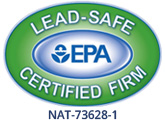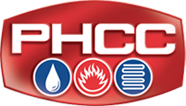6 Reasons Why a Furnace Blows Cold Air
 In wintertime, the outdoor temperature often drops below freezing, especially at night. When this happens, you turn up the thermostat inside, expecting hot air to blow from the furnace. Instead, your home remains chilly, as your furnace blows nothing but cold air.
In wintertime, the outdoor temperature often drops below freezing, especially at night. When this happens, you turn up the thermostat inside, expecting hot air to blow from the furnace. Instead, your home remains chilly, as your furnace blows nothing but cold air.
What could be going on? There are several reasons why your furnace could be blowing cold air, including incorrect settings to wear and tear that affect its performance.
The Fan is Set to On
One common culprit is having the fan setting switched to “on,” rather than “auto.” Within this setting, the furnace’s blower remains consistently on, regardless of whether the burner is helping to create hot air. As such, the furnace is blowing cold air without providing any heat in between these intervals.
If you turn the thermostat setting back to “auto”, you should only feel air blowing when the burner turns on. Yet if you continue to feel cold air, the issue may be more serious.
The Pilot Light Burned Out
This issue pertains to older-model furnaces that use a pilot light to ignite the gas and start the combustion process in the burner. When this light goes out, the furnace cannot heat any of the fuel. Following directions from the owner’s manual, you should be able to have the light reset to continue this process.
If the furnace still is not producing hot air, the pilot light may only have been one part of the issue. The burner may have accumulated years of dust and debris over the years, requiring professional attention to get the combustion process started again. At this point, your furnace needs to be thoroughly cleaned.
Overheated Heat Exchanger
The heat exchanger consists of a series of metal coils that heat the air when it passes over. This part can become too hot and, in response, the furnace will shut off the burner so the part can cool down. As this occurs, you will likely feel cold air coming from the vents in your home, which may be accompanied by a burning smell.
Generally, the heat exchanger overheats in response to restricted airflow, which can be the result of a dirty or clogged air filter. When this occurs, the unit has to run for longer to create hot air and parts like the heat exchanger risk overheating.
Replacing or cleaning the filter is a straightforward solution and, by reducing this strain, the furnace should resume producing hot air. If you continue to feel cold air, the furnace may require repairs.
Insufficient Fuel
A gas-powered furnace requires fuel to produce hot air. As your supply gets low, the furnace’s operation is affected and particularly, the pilot light won’t be able to remain on, which prevents the combustion process. In turn, the blower will start but generate only cold air.
As one solution, it’s a good idea to make sure the gas valve is on and to check the fuel supply. If the furnace has enough oil to operate and the gas valve is on, the issue may involve another part.
Part Issues
When it comes to cleaning or repairing parts, the following issues may impact the performance of your furnace:
- A valve that’s clogged with dirt and debris
- A faulty thermocouple
- Dirt and debris clogging the oil filter
- Electronic ignition won’t work
- Dirty or worn-out flame sensor
- Clogged drain lines
These aspects can all affect how the furnace ignites to produce heat, often interfering with or halting the combustion process.
Duct Issues
If everything looks fine inside the furnace but you’re still feeling cold air, the issue might not even involve the system at all. If your duct has developed a large hole, it may begin to leak most of the air passing through, greatly reducing what you feel coming from the vents. At this stage, your ducts will need to be examined and repaired.
If your furnace is blowing cold air, have the HVAC technicians at MJ Fahy & Sons assess your system and recommend repairs. To schedule an appointment, contact us today.




